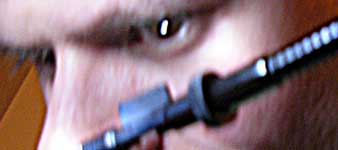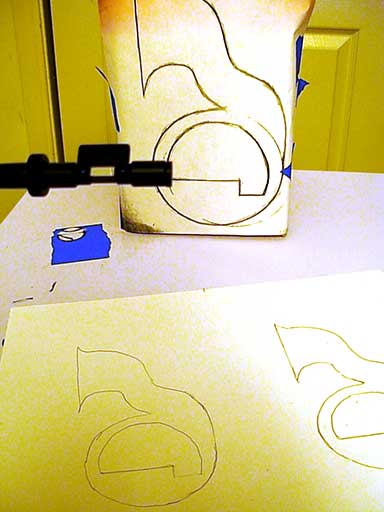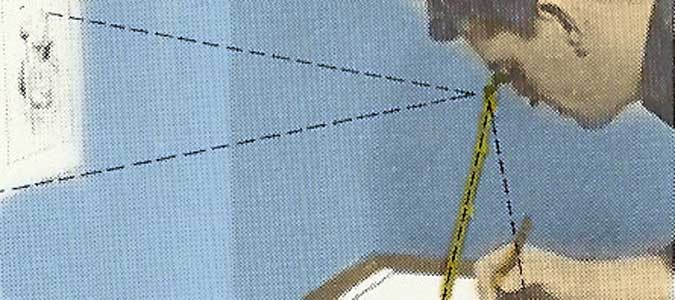This page may contain one or more affiliate links, which means that if you purchase a product through that link, I may receive compensation. The links will be identified with the text "affiliate link". Click to learn more.
You may be wondering what is a camera lucida, or how does it work. It is basically a prism on a stick. Yes, it is that simple. It is a drawing aid used by artists to help copying what you see in real reality, or from a photograph. When using the device with your drawing paper resting flat on the table, you will see a hazy appearance of whatever is in front of you… that is, the subject you wish to draw. For a more clearer definition, read on.
How Does Camera Lucida Work?

You can think of it as a miniature projector. When light is passed through a lens or prism, the direction and size of the light changes. To make this clear, look at the photo. A flashlight pointed on one side of the prism (the area your eye looks into, in this case) will be projected on the other. Or in other words, whatever you see when looking down through the camera lucida will be a reflection of what is in front of you.
Camera Lucida Tutorial

Using the camera lucida definitely takes some practice. The first time I tried to use it, I was having a very hard time. When the prism is angled at 45 degrees, you need to look straight down, and have your object of interest directly in front of you. Have it maybe two or three feet back, depending on its size, or the size you want it to be on the paper.
Have your subject be something bright, such as a computer monitor or a lamp. The brighter the better. This will help you find the right angle and discover how the camera lucida works. With your head over the device and looking straight down at the prism, move your head slowly in different directions until you see the bright light of your subject. Then bring your eye closer, and adjust the device as necessary.
Underneath the camera lucida, you want to have your drawing paper flat against the table. Do not have it on your lap, or this will effect the tracing of your drawing. For the same reason, your subject must stay still. Drawing a person will be more difficult, and drawing an animal will be virtually impossible.
Issues With The Camera Lucida

If this drawing device is so wonderful, then why is it not more easily available? Because it has some problems. If the room or your subject is too dark, using the camera lucida will be hard. If you are tracing something on a large surface, such as a canvas, the device will need to be higher, making it impractical because you will not be able to reach the paper and look through the prism at the same time.
Drawing a photograph means having the camera lucida, paper, and photograph all be at the perfect angle. If you are trying to make a one-to-one ratio copy of a drawing or picture, it will mean having the picture taped on a box in front of you at the same distance from the device as between the device and your drawing paper.
In summary, the camera lucida is useful for copying or tracing simple subjects in reality. Although a great tool for practicing contour drawing and learning to study object characteristics, it may not always be the best tool for the job.
If you are looking for a camera lucida for sale, you can find a ton of them on eBay from a time when they were popular. If you are looking for a new one to buy that is more modern, NeoLucida is available
on Amazon at the time of this writing.
Any experiences or questions you wish to share? Leave a comment.

